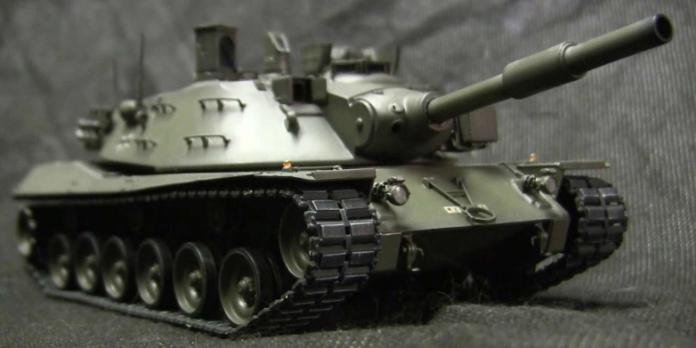In 1963, designers began to develop the future MBT-70. Initially, neither the West Germans nor the Americans had a common opinion on the tactics of armoured vehicles, so the process was difficult, The National Interest reports.
The story of the MBT-70 is a tank that two armies initially said “no” to, but it became a great idea later on. Taking two countries skilled in tank design – the Americans and the West Germans – and creating a super tank. They could learn from the vulnerability of armoured vehicles in the 1973 Yom Kippur War, when tanks were destroyed by anti-tank missiles, and start building a joint US-West German tank from scratch.
At least, that was the original idea. The new MBT-70 tank was supposed to have very enviable characteristics: long-range performance and a new-fangled suspension that improved aiming and focusing. However, it turned out that the tank was too heavy, the ammunition was of poor quality, testing took too long and the technology itself was expensive. The MBT-70 production was not put on the assembly line. Here is a brief history of the tank from idea to failure.
The Americans and West Germans wanted to modernise the protection and survivability of the main battle tanks of the era, the Leopard One and M60. These tanks had vulnerabilities that could have been disastrous if manoeuvre armoured battles were fought in Europe against the Soviets, according to The National Interest.
In 1963, work on the MBT-70 began. At first, the designers faced difficulties. Both the West Germans and the Americans had no consensus on the tactics of the armoured vehicle. They resented each other’s plans for the tank’s gun and engines, and the teams made different designs for both. They could not agree on whether to use the metric system, and communication was not the best.
However, both engineering teams were of the opinion that the armour should be made of “steel-plastic tungsten alloy… with unified steel armour” for the inner protective shell. The tank would then have been protected against the 105mm shells used by the Soviets at the time. This would have given the crew the confidence that they were invulnerable to Soviet tanks and anti-tank missiles.
The resulting tank had an outrigger suspension system. It could lower the silhouette to make it a more difficult target. The tank could then be raised when it needed to be dragged quickly over roads or flat terrain. It also allowed the turret to fire from a higher altitude at distant targets or in cities where enemy soldiers were fighting from the second or third floor of buildings.
The range of the 152mm main gun allowed the tank to fire outside the range of anti-tank missiles. In addition, the 152mm gun could fire its Shillelagh anti-tank missiles. The 20mm anti-aircraft gun could defend against aircraft and helicopters. The MBT-70 was also the fastest of all Soviet tanks. Testers liked its manoeuvrability and acceleration. It protected against chemical attacks, which gave the tankers peace of mind, The National Interest reports.
However, there was a problem with the gun. It used a new type of cartridges “without cartridge case”. They were supposed to be lighter, which was logical, but it didn’t help that the cartridges didn’t burn completely, and there were still burning elements in the barrel – a dangerous result that interfered with subsequent firing. Without high heat, moisture got into the barrel, causing the cartridge to expand and not fit in the barrel.
The designers also failed to take into account that bridges and railway carriages in Europe were not designed for such heavy tanks. This was a fatal flaw that could make the tank unfit for use in combat.
All of these problems caused the production time to increase. The tank exceeded the budget and dragged on. Therefore, the West Germans and Americans abandoned the MBT-70 and moved on to the development of the Leopard Two and M1 Abrams. It was unfortunate that two allies could not play well in this project. Perhaps the language barrier or disagreements over the metric system led to communication problems. The biggest problem was the heavy weight of the armour – this prevented it from moving around German training ranges in preparation for war with the Soviets. Thus, the MBT-70 got scratched.
